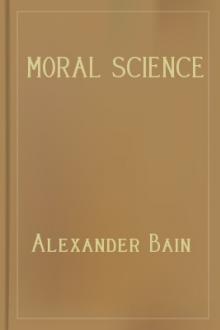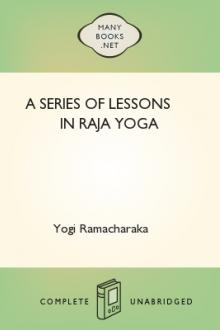Man's Fate and God's Choice, Bhimeswara Challa [best free ereader .TXT] 📗

- Author: Bhimeswara Challa
Book online «Man's Fate and God's Choice, Bhimeswara Challa [best free ereader .TXT] 📗». Author Bhimeswara Challa
126 Rewriting Human Prehistory. The Economist. UK. 30 October 2004. p.81.
species may have co-existed in this region not so long ago.”127 The Java discovery raises the question if there could be circumstances which could trigger the advent of another ‘spin-off’ human species, and opens the matter of brain size and intelligence. The question is how could a brain, the size of a grapefruit, have engineered cognitive capacities comparable to those of the modern man? A simple answer may not satisfy our brain-dominated consciousness: they did not derive their intelligence principally or exclusively from the brain. What propelled them was ‘heart intelligence’, which is connected to but quite independent of the brain. This recent discovery is turning upside down our theory of collective cognitive development.
If it is probable that two strains of humans could co-exist, there could have been, in human history, a third strain — the ‘superhuman species’, existing simultaneously or before the advent of modern man, as occultists like Blavatsky long ago speculated. It was even said that the first few generations of humans might have had three eyes and four arms! It is an intriguing thought that maybe, just maybe, some still do have such extraordinary features, in some still undiscovered island, or in Shangri-La or Shambhala high up in the Himalayas! And maybe they exist on another planet. All this might seem speculative fantasies, but they underscore how little we know of our past and about ‘out there’. More importantly, they cast a new light over the future course of evolution. Clearly, a thorough and simultaneous transformation in a species as diversified and disparate and self-centered as the Homo sapiens is a near impossibility without its total annihilation first. Is it then conceivable that a section of Homo sapiens could evolve into a ‘higher species’ — hopefully not the mental ‘God-Man’ of Mark Hamilton, but one with a more compassionate consciousness, an essentially spiritual being — while the rest stay the course and eventually become extinct, possibly by their own hand, or because they were unable to adapt to the changing environment, or because they stopped evolving as the critical factors necessary for evolution were absent?
It is this disconnection between ‘perceiving and thinking’, or between intelligence and intuition, or, as some like to put it, between the right and left brains, and between the heart and the brain/mind, and the consequent dominance of brain-based thinking and intelligence that has fueled the historic human civilization. We separate ourselves from our prehistoric predecessors, the so-called barbarians, by our concept of ‘civilization.’ That assumption bears some reflection. Civilization is the state of society in which its constituents, the human individuals, are able to satisfy their basic needs like warmth, food, shelter, and sex with very little effort, and feel so secure that they could do other things pertinent to the development of their mind and spirit. The assumption is that once people acquire a certain control over their material needs, they will divert their ‘surplus’ labor, time and energy, not for the purpose of furthering material aggrandizement, but for the pursuit of higher values and goals. In actuality, what has happened is that once man mastered his material life he has not stopped there but pursued the same goals that our ‘barbarian’ ancestors did. In the main, though, man no longer lives in the milieu of Nature but in a ‘soul-less civilization’, and he is dangerously dependent on technology, or as some call techno science, which could determine the drift of evolution. Evolutionists talk of ‘moving target selection’, ‘arms race’ and ‘escalating spiral’, to indicate that animals develop features necessary for survival, but the predators also develop the features necessary to catch and kill their prey for their own survival, and sometimes the spiral gathers inexorable momentum, spins out of control, and a species become extinct.
127 Kate Wong. Digging Deeper: Q&A with Peter Brown. Scientific American, USA. 27 October 2004. p.16. Accessed at: http://www.scientificamerican.com/article.cfm?id=digging-deeper-qa-with-pe
We assiduously nurture the unassailable conviction that ‘we are the best that there can be’. We are also taught to believe that primitive or prehistoric man, was an ‘automatically reacting, unconscious’ being, who lived by ‘blind beliefs,’ and led a robotic life, unaffected by reasoning. This premise has long been questioned by those who were on the fringe of organized belief systems. They argue that the human beings of earlier ages were not only physical giants but also that those civilizations were more ‘civilized’ in the sense of living in harmony with Nature and in resolving inter-personal conflicts. One pointer could be the epics of those ages like the Ramayana and the Mahabharata of India. Such epics are not only stories but also snapshots of that time. Often, the literature and crafts and arts of the times offer a peek into the state of the society of that time. The Egyptian pyramids, the frescoes of Ajanta in India, the Kailasantha temple of the Ellora Caves (carved out of a single rock that covers an area double the size of the Parthenon in Athens), the Temple of Delphi, the Nazca Lines in Peru, all speak of what the ‘primitive people’ were capable of. These people showed not only astonishing technical capacity but also awesome tenacity and commitment of a whole society over several generations, as many of these structures and art took centuries to finish. Human creativity cannot but depict contemporary lives and morals.
Acceptance and tolerance
In whatever way biologists might define the attributes of an ‘intelligent primate’, in practical terms, a tribe of such primates is a conglomeration of disparate and autonomous individuals, capable not only of social living and interbreeding but also of finding harmony in diversity and common ground for common good. Acceptance and tolerance are necessary qualities for coexistence and cooperation. It is one litmus test that the humankind has woefully and wholesomely has not measured up to. Maybe one could even say that it is the ‘hallmark’ of our culture. We have not really learnt what and when to accept, and when and what to tolerate. Sometimes we like the status quo, and sometimes we do not; sometimes we want to change, and sometimes we resist change. We tolerate things we should not tolerate, and are intolerant when we should be tolerant. In fact, all of human history and its attendant atrocities and horrors are but extensions of endemic non-acceptance and intolerance. The problem is not about doing what one wishes to do, but asking others to do what one wishes to do. There is nothing wrong with competition per se; it forces us to excel. We must distinguish between unity, which is desirable, indeed imperative, and uniformity, which is destructive. Another characteristic of the human mind is the pathological desire to possess: we want to possess everything we see, like, and touch — whether it is property or a person, a gadget or a garden
— which incubates friction since someone else might want it even more. We are intolerant of sharing. When our time is finally up and our successor species has to write an epitaph on the tombstone of its predecessor race, it might well inscribe intolerance as the main cause of our premature passage. Whatever might be the immediate cause, intolerance is playing a major role in creating the conditions and in setting up the scenario. Practically, in every crisis that humanity has faced, intolerance has been the driving force. The classic silent-era film Intolerance: Love’s Struggle Through the Ages (1916), chronicles mankind’s intolerance during four different periods in human history like the Fall of Babylon; the crucifixion of Christ; the French Renaissance, the failure of the Edict of Toleration, and the resultant massacre; and modern America. One could add many more, triggered by cultural, economic, racial, and religious causes. In effect, intolerance in human affairs has been constant, continuous and universal, affecting individuals as much as communities, societies, and nations. The well-known British historian Paul Johnson says in his Modern Times (1983):
“The study of history suggests that the sum total of intolerance in society does not vary much. What changes is the object against which it is directed…”128 Intolerance has been called “the most socially acceptable form of egotism.”129 It is the ugly outgrowth of the ‘I’-ness that defines the human personality. The most visible face of the ego is intolerance. Our intelligence often manifests as strong opinions, beliefs and prejudices, but it gives no room for others to have the same. We search for information, not as an input to making choices, but to reinforce our prejudices. Emerson said “People seem not to see that their opinion of the world is also a confession of character.”130 The fact is that truth or reality can rarely be seen from the prism of a lone person. And self-belief is not inimical to acceptance; it is self- righteousness. Intolerance is the reflex of an insecure person; according to British the occultist and writer Aleister Crowley, “Intolerance is evidence of impotence.”131 Most people are intolerant in some way or the other but it is more in the mind, and remains passive. And it is not always negative: intolerance in the face of intolerance is good; intolerance to fight inequity and injustice is necessary. But most people show, not the ‘good’ intolerance but ‘bad’ intolerance. ‘Aggressive intolerance’ of all sorts — personal, professional, political, racial, ethnic, religious — has taken a firm root at the deepest level of our consciousness, and few, if any, are untouched by it. It is mainly responsible for much of what is wrong with the world today. And it, more than any other factor, bears a huge chunk of responsibility for the breakdown of all kinds of relationships as well as for the wrath, discrimination, violence and hatred that are suffocating the world today. We use double-standards to judge ourselves and others, oblivious to the foibles in us which we find and magnify in others. As the American ‘self-help’ guru Wayne Dyer (Your Erroneous Zones, 1976) says, when you judge another person you are defining him. The workbook of A Course in Miracles (published by the Foundation for Inner Peace), a book that Wikipedia describes as a “self-study curriculum (spiritual in nature) that sets forth an absolute non-dualistic metaphysics yet integrates (its definition of the principle of) forgiveness emphasizing its practical application in daily living” says “Today I will judge nothing that occurs”. Anyone who has ever tried to put that into practice, knows how almost impossible it is to keep that promise. What is it about judgment that makes it so hard to let go of? “It is curious”, Jesus says, “that an ability so debilitating would be so deeply cherished.”132 We feel compelled to pronounce our judgment and to correct the errors of the world around us, an onerous,





Comments (0)